I’m back with another monthly reading wrap-up! I love doing this kind of book list because I get to reflect on the kinds of books I read each month and recommend to you my favorites.
Without further ado, here are my short reviews on each of the 7 books I read in April. I hope you’ll find some good book recommendations or at the very least, give you some motivation to finally pick up that book you’ve been meaning to read!
FICTION
“The good of a book lies in its being read. A book is made up of signs that speak of other signs, which in their turn speak of things. Without an eye to read them, a book contains signs that produce no concepts; therefore it is dumb.”
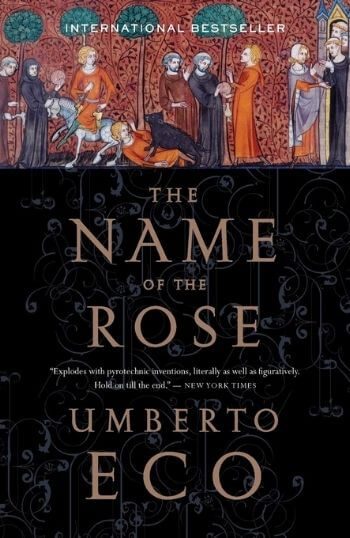

The Name of the Rose is genuinely one of the smartest and funniest books I’ve ever read! This whodunit novel follows two monks, Adso and William, as they investigate a series of murders at a monastery in 14th century Italy. But actually, the whodunit part is the least of it; it’s more philosophical, political, historical, and to its core, a love letter to books. The friend who recommended it to me (hi Daniel!) summed it up nicely when he described the book as a “more intellectually interesting Dan Brown novel.”
Don’t get me wrong; Dan Brown novels are fun to read. But Eco tackles philosophical ideas more seriously and his prose immerses the reader deeply in a specific place and time. To be honest with you, I was so nervous to read this because I didn’t know anything about the medieval period at all. But rest assure, Eco will gently guide you through the political climate and culture of that time.
Adso and William are also hands-down my favorite buddy-cop duo of all time now! Adso is naive and William is wise, so their pairing makes for heartwarming character development and hilarious comedy. I’m telling you, this book has a lot of sass. I’m a ho for coming-of-age stories as well, and I was surprised to read about Adso’s growth to maturity in the midst of a murder mystery. I’ve never seen this done before.
The Name of the Rose is equal parts entertaining and thought-provoking. Because you’re dropped head-first into the pressing political climate of the time between the Roman Catholic Church and the Roman State, the novel asks questions like: should the Church be poor? Should the Church and state be separated, and if so, what would that separation look like? Should only well-educated people be the gatekeepers of knowledge? I still think about these questions all the time. And I think what makes The Name of the Rose so good is that its whimsy is always balanced out with deep explorations of society.
The Name of the Rose can get draggy at some points, however, because the descriptions can get dense. I recommend you read it alongside an audiobook, which is what I did and it helped me a lot.
YOU MIGHT ALSO LIKE – Book Analysis: The Name of the Rose by Umberto Eco, where I explore the question, “Is it possible to know the Truth?”
“What do you think is the biggest waste of time?”
“Comparing yourself to others,” said the mole.
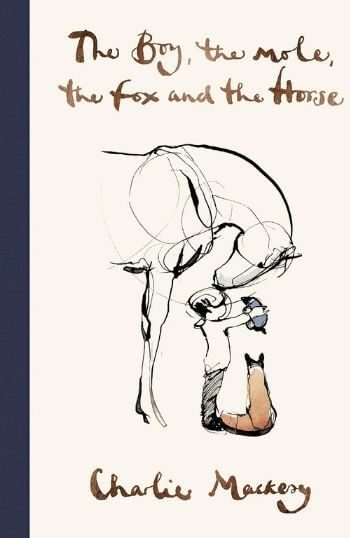

Yeah, I’m not the target audience for this graphic novel/children’s book (it’s one of those children’s books that are also aimed at adults). The Boy, the Mole, the Fox, and the Horse chronicles the unlikely friendship between the titular characters. I interpreted the book as an allegory of how vastly different people—even elements of nature—exist to complement and support each other.
I read this book because a lot of people have said it made them intensely emotional. And I guess in a world full of hate and judgment and competition, reading a book solely about friendship can feel like a much-needed warm embrace. I bet reading this book when you feel directionless can be one of the most impactful experiences ever.
But as it happened, I read this when I wasn’t in need of the type of advice in this book. To me, a lot of the lines even feel somewhat inauthentic, because they resemble those Instagram quotes that feel very heavy-handed—those “live, love, laugh” feel-good platitudes. This is why The Boy, The Mole, the Fox, and the Horse mostly feels cheesy and uncreative to me, even empty. Too many people in too many circumstances have espoused the kinds of things espoused in this book, which is why the book sometimes rings hollow even though it’s supposed to comfort.
Still, the illustrations here are marvelous to look at. Because they mimic the style of children’s picture books, they evoke a strong sense of nostalgia, safety, and whimsy. We’re always going to have that inner kid in us who wants to be comforted and reassured from time to time; and this book certainly caters to that feeling.
“What if, at some level above or below his own perception, he does actually desire her? He doesn’t even really know what desire is supposed to feel like.”
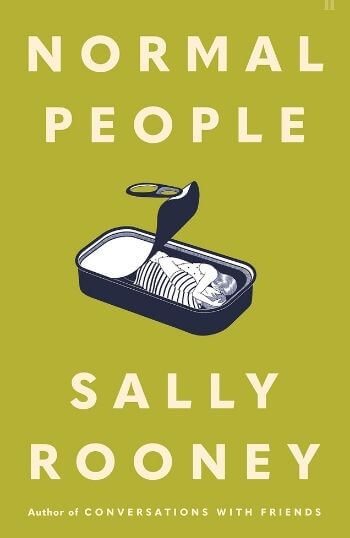

With acute intimacy and psychological complexity, Normal People tells the years-long on-and-off relationship between two college students, Marianne and Connell. Even though this was my second time reading it and I’ve already watched the TV adaptation—one of my favorite TV series of all time—I still found this novel even more complex than I had remembered it.
People either really love or really hate Rooney’s writing, and I obviously fall under the former category. Her writing actually reminds me of how Celeste Ng in Little Fires Everywhere spells everything out for the reader, which I didn’t like. But it works in Normal People. Marianne’s and Connell’s narrative voices spelling everything out for the reader functions as a way to show readers how fervently they psychoanalyze each other. The problem, however, is that they often end up overthinking and ultimately not communicating, to detrimental consequences.
Normal People is about a lot of things, to be honest. In her signature stripped down manner of narration, Rooney depicts what a young all-consuming love is like—the thrill and unique challenges of it. It’s also about how wanting to please other people can be so destructive because it often holds us back from the very things that make us happy. It tackles power dynamics in a relationship, mental illness, trauma, and socioeconomic class differences, among others.
I was so impressed with how accurately Rooney was able to capture what upper-middle class millennial and Gen Z people are like too! I totally missed that detail when I read it the first time around. Marianne, Connell, and their friends at university are all painfully aware of all the social issues that need solving but don’t know how to productively go about actually solving them. I mean, at the end of the day, these students are just sharing their opinions on racism, capitalism, and politics over tea in apartments they own. I struggle with this too; I am, after all, just some woman on the internet writing about her opinions.
Perhaps ultimately the magic of Normal People depends on your reading preferences, just like Call Me By Your Name. In both books, the majority of the pages are dedicated to the characters’ introspection more than anything else—to the stuff that happens in their minds. If this is your jam, then you should totally check this book out!
READ MORE – Book Analysis: Normal People by Sally Rooney, where I explore the question, “Why do people fail to communicate with each other?”
NONFICTION
“The press is as much part of our democracy as Congress or the executive branch or the judicial branch. It has to keep things in check. And when the powerful control the press, or make the press useless, if the people can’t trust the press, the people lose. And the powerful can do what they want.”
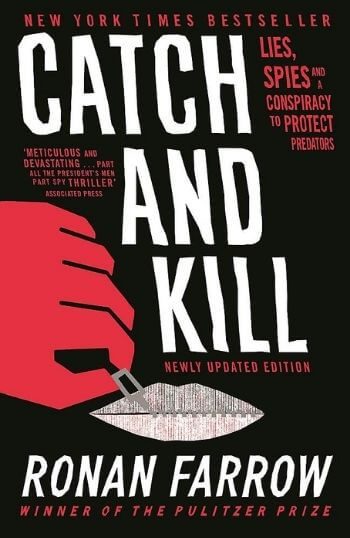

Hollywood mogul Harvey Weinstein had been sexually abusing women for decades without consequence. This open secret was only brought to the public’s awareness in 2017 when three investigative journalists broke the story. One of them was Ronan Farrow, and Catch and Kill documents his experience reporting that piece.
This book depicts clearly how the culture to silence victims is deeply embedded into the corporate and legal practices of businesses. For example, there were money reserves at Miramax (Weinstein’s company) for the sole purpose of paying victims for their silence. Corporations frequently bend to protect powerful people. In the book, Farrow was a reporter under NBC but because NBC executives had close ties with Weinstein, they decided to kill Farrow’s story there. This is why Farrow ultimately published his report at The New Yorker.
You also get a clear look on how these sexual assault crimes affect victims, and the backlash they get when they stand up to powerful men like Weinstein. Italian model Ambra Gutierrez, for example, was already traumatized as it is when Weinstein assaulted her. But she got traumatized over and over again when she reported Weinstein to the police, and Weinstein’s team publicly smeared her reputation in retaliation. Speaking up destroyed her career, prompted paparazzis to chase her and her family everywhere, and made her develop an eating disorder and depression. This is why women don’t report sexual assault.
Catch and Kill is my first exposure to the process and dangers of investigative journalism. Throughout the reporting, Farrow was being stalked, intimidated, betrayed, and gaslighted. It made me realize the importance of a free press and how investigative journalists are integral to a functioning democracy. Without a free press—with all its good eggs and bad eggs—powerful people, governments, and corporations can just do whatever they want and don’t have to take responsibility. It’s necessary that the truth always comes out.
But investigative journalists are being murdered everywhere, which is so concerning because I’m not sure if it’s possible for the public to be well-informed without them. I think of my home, the Philippines, where media killings are so bad that the country is ranked the deadliest country for journalists in Southeast Asia. Catch and Kill taught me that it’s truly scary to question the powerful, but incredibly important that we do so.
“So many introverts hide even from themselves. We live with a value system that I call the Extrovert Ideal—the omnipresent belief that the ideal self is gregarious, alpha, and comfortable in the spotlight.”
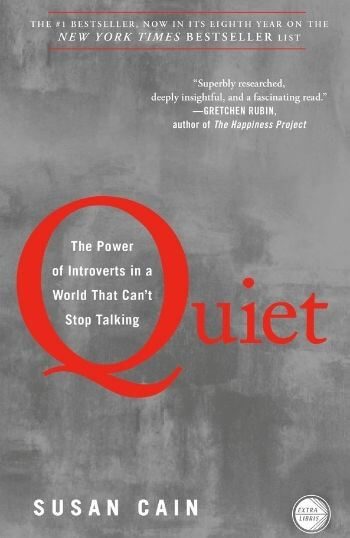

Quiet should be mandatory reading for all introverts because—and I’m not exaggerating—it totally changed the way I see myself and the world! Quiet made me realize that similar to how women live in a man’s world, introverts live in an extroverted world. This book explains how modern Western culture (but I argue in places elsewhere too because imperialism, baby) is designed for extroverts.
All that emphasis on group work, networking, presentation skills, and charisma? All that pressure from a very young age to socialize with kids, to eat with people during lunchtime, and to keep going out with friends? That’s because we’ve unknowingly decided that extroverts are the ideal kind of people.
And this Extrovert Ideal has affected me personally for the longest time. To my core, I’m an introvert. I love my personal space, working on projects alone, and disconnecting from everyone for long periods of time. But I’ve forced myself, especially in my teenage years, to be more extroverted because I wanted to correct something that I thought was wrong with me. I conditioned myself to love being with people all the time, engaging in group work, and having lots of things to say to the extent that I actually did believe myself to be an extrovert at one point (which is ridiculous, thinking about it now).
I thought it was wrong that I prefer staying at home instead of going out, so much so that I’d always feel guilty declining social invites. I thought it was wrong that I prefer to eat by myself at school—to give myself personal space to recharge—so I always pushed myself to eat with others.
It’s such a huge relief to finally understand that my needs are normal after all. It’s only the culture that doesn’t adjust. Quiet explained why I often feel overwhelmed and am easily distracted in a noisy environment (“too many stimulants” as Cain would say); why I dislike being in teams; why I suck at impromptu speaking; and why I’m always wiped out after get-togethers; among other things.
The best books are those that comfort, and Quiet made me more comfortable in my own skin. I know that viewing the world in terms of introverts and extroverts may sound reductive but trust me, Cain injects so much nuance into these two concepts. It’s also important to remember that introverts and extroverts lie on a spectrum. The book says early on, “There is no such thing as a pure extrovert or a pure introvert.”
“What I remember about the apartment the night I came home alone from New York Hospital was its silence.”
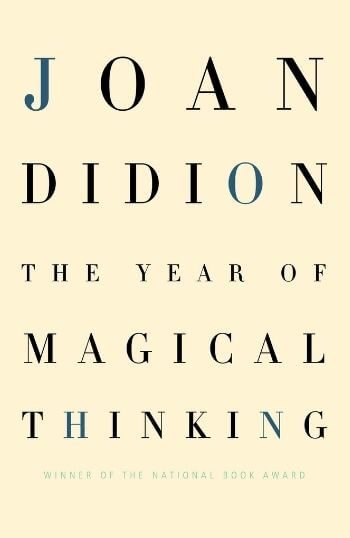

In The Year of Magical Thinking, Didion describes the process of grieving during the first year after her husband of 40 years suddenly dropped dead during dinner one night. This is one of the most famous books in the grief memoir genre, so I went into this with high expectations. But ultimately, I don’t think those expectations weren’t quite met.
Let’s talk about the good things first. I absolutely love the cohesion of this book! Didion constantly weaves in information, memories, and anecdotes told in earlier chapters in subsequent ones. This pattern enables her memories to take on new meanings each time she brings them up. I feel like it reflects the process of grieving—analyzing and re-analyzing events from the past obsessively, and never quite being satisfied with the meanings you come up with.
Didion’s writing is meticulous in this sense, and is something I totally admire. There are some lines in here that are so well-articulated and that will just punch you in the gut.
It’s also called The Year of “Magical Thinking” because this book so perfectly captures how people adopt whatever mental gymnastics they have to adopt in order to get through grieving. In this case, Didion spent so much energy in that first year to recount over and over again the hours, days, weeks, years, and even decades before her husband died, looking for clues that might’ve indicated his sudden death. While this exercise is fruitless in a practical sense, it does help Didion in making sense of her husband’s permanent absence. It’s her way of going through grief.
Now, at first I wasn’t going to say anything about Didion’s elitism because I thought I was just being judgmental. But I found that other people thought so too!
Yes, of course her immense privilege doesn’t negate her pain; pain has no hierarchy. What I just take issue with is that she came across like her wealth and upper-class status are pretty normal. She always talked about the good old days when she, together with her husband and daughter, used to fly to this and that shooting location; how “no one thought twice about flying seven hundred miles for dinner;” how she can’t make herself travel to “Milan, Honolulu, or Bogotá” without her husband anymore. I don’t know, it was too out-of-touch that it became so jarring for me to read at many points.
I like Kathryn Mannix’s With the End in Mind more because it deals with death and the modern culture surrounding death with way more compassion. But Mannix’s view of grief comes from a healthcare worker’s standpoint while Didion’s is from firsthand experience. Both are definitely valuable perspectives to read about.
YOU MIGHT ALSO LIKE – Book Analysis: The Year of Magical Thinking, where I explore the question, “What does it feel like to actually grieve?”
“Part of a reader’s job is to find out why certain writers endure.”
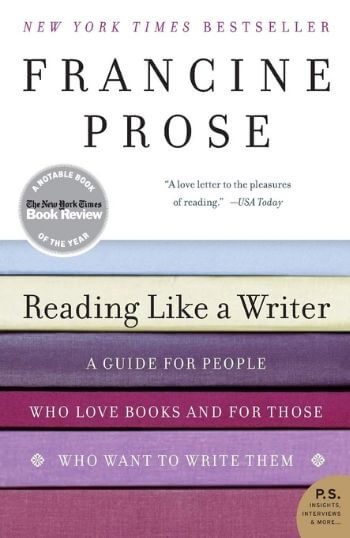

A lot of writers say that in order to write well, you need to read well. Now, what does it mean to “read well?” Well, answers vary. But it generally means that writers must read a lot and as they read, analyze how and why certain texts work. This involves diving deep into the mechanics of the form, also known as close reading. And in Reading Like a Writer, Prose (what an appropriate surname, by the way) illustrates by example the value that writers can get by close reading texts.
I read this book because I wanted to brush up on my close reading skills, and Reading Like a Writer has definitely given me so many points to reflect on—especially in its chapters on narration, dialogue, and gestures.
It presents so many new ideas (new to me, at least), and this is rich coming from someone who’s already read a lot of books on writing. For example, Prose argues that the worst kinds of dialogue are those that only contain one level of meaning to them—in order words, those that only convey information and have no subtext. Because in real life, the way people have conversations has a lot to do with performance and subtext.
Still, I was hoping to find more actionable tips here. Prose just frequently shows excerpts then does close reading analysis on them. I think her intention was to show readers how to do close reading by example, and there’s certainly value in that. But it would’ve worked better for me personally if she broke down her process of close reading and suggested elements that readers would do well to pay attention to.
I suppose I just wanted the book to tell me more clearly what to do. But that idea definitely goes against Prose’s belief that any tip she gives can easily be discarded when the story calls for it. She emphasizes over and over again that there are no hard-and-fast rules for reading and writing stories, which is why the book is mostly a showcase of all the possibilities of what you can do with paragraphs, character, details, etc.
JOIN THE WEEKLY NEWSLETTER!

Get updates on the latest posts and more from Alyanna Denise straight to your inbox. Guaranteed no spams.
By subscribing, you consent to receiving emails.
That’s all for now. Happy reading!
— Alyanna


